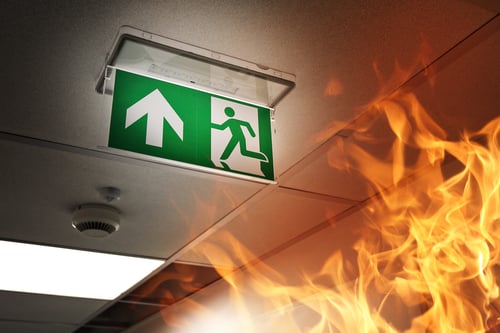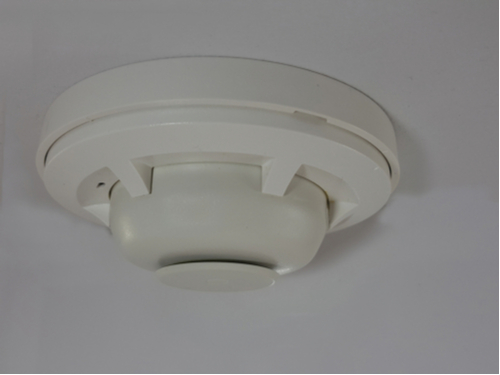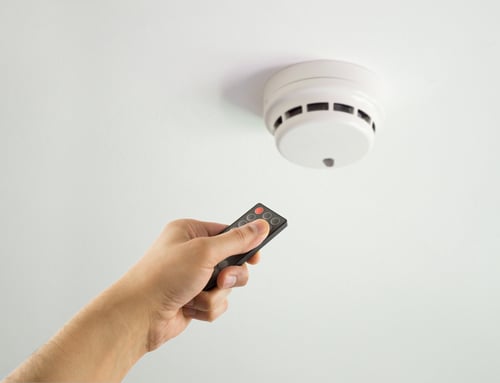Heat Detector Design Service
Our designs are highly efficient and protect your property from fire and damages.
Our systems can trigger fire sprinklers and call the fire department for extra protection.
We deliver our designs in a turnaround time 50% faster than our competitors.
Fire is a constant threat, especially in cities across the USA with high rises and congested buildings. Fires are more common than you think and cause loss of lives and damages to property. A fire department in the USA responds to fires every 24 seconds in some part of the country. In every 63 seconds, a fire breaks out in a structure; every 88 seconds a home is engulfed in fire, according to the NFPA.
In 2016, the US recorded a total of 1,342,000 fires which killed 3,390 civilians and injured another 14,650. The fires also resulted in property damages of $10.6 billion.
The statistics are really frightening and show how important it is to take measures to prevent fires. In this regard, the importance of fire alarm systems cannot be undermined as they help detect fires at the right moment so that you can take action. Heat detectors are a part of an efficient fire protection system and go a long way to keep both commercial and residential properties safe.
Heat detectors detect the temperature and can sound an alarm when the temperature rises beyond a certain point to indicate a fire. New York Engineers designs advance fire alarm systems using heat detectors which can sense the slightest increase in temperature and act instantly to notify you of fires.
We can design the heat detectors to integrate with sprinkler systems so that incidents of fires can be mitigated automatically. The system can also notify the fire department so that you don't need to make any frantic calls. Our designs follow all national and local fire codes and we coordinate with your local fire department to achieve full compliance and sign offs.
If you are looking to protect your building from the menace of fires, we can help you create a resilient structure with the necessary fire protection system, including heat detectors. You will get notified of emergencies at the earliest so that no time is wasted in taking action.

Heat detectors are vital devices for detecting fires and ensuring safety. As the name suggests, the devices sense the temperature of a room or area in order to detect fires. Heat detectors work on a similar principle used by smoke detectors, by tracking the temperature instead of smoke.
Heat detectors generally detect the heat that comes as a result of combustion. The devices trigger an alarm when they sense a rapid rise in temperature or when a certain temperature is reached. The heat detectors are paired up with control panels which sound the alarm, initiate the water sprinklers or call the fire department.
Heat detectors are suitable for application in a number of scenarios where other fire alarm systems like smoke detectors are not useful. For example, any environment like warehouses, factories, storage facilities or garages which has a high amount of airborne particles due to increased steam, dust or moisture will not benefit from smoke detectors. In such cases, heat detectors become a preferred choice as they focus on temperature to detect fires.
The kitchen in your home is another example. Smoke detectors may not be the ideal choice as your kitchen can be filled with smoke during normal cooking. Heat detectors are better choices in this case.
Heat detectors also come with several benefits compared to other fire alarm systems. Some of the benefits include:
Most properties use a combination of heat and smoke detectors to create a foolproof structure. We can help you design complete fire alarm systems with heat detectors that sound off at the first sign of fire. Our solutions help you take timely action so that you can protect your family and the occupants.
We can use different technologies and types of heat detectors based on your needs and circumstances. Our team will get to know your objectives and carry out building analysis to decide which type of heat detectors will work best in your case.
Generally, we use two main types of heat detectors :
1. Rate-of-Rise (ROR) Heat Detectors
ROR heat detectors respond to sudden rise or changes in ambient temperature over a baseline value. The heat detectors sound an alarm when the temperature increases suddenly over the baseline condition. ROR heat detectors can respond to lower threshold parameters compared to situations when the threshold is fixed.
The devices set off an alarm when the rate of temperature rise crosses the rate which was fixed as the safe rate of temperature change per minute. ROR heat detectors can detect fires that grow rapidly in intensity and responds to significantly fast temperature changes.
ROR heat detectors rely on thermocouples or thermistors to work. The devices have two heat-sensitive thermocouples where one detects heat and the other detects ambient temperature. The alarm is set off when the temperature of the heat-detecting thermocouple crosses that of the second thermocouple.
2. Fixed Temperature Heat Detectors
Fixed temperature heat detectors respond when the ambient temperature crosses a fixed value. This type of heat detectors are widely used and come with a fixed temperature value of 136.4 F to 117 F. Modern fixed temperature heat detectors are mostly activated at 117 F, which provides adequate time to escape in case of a fire.
The heat detectors are useful to detect fires that acquire high temperature at a slow rate. The heat-sensitive elements accumulate heat and reach a point where solid turns to liquid. The device attains its operational temperature a little later after the surrounding temperature crosses the device temperature. Then the detector gets activated and sets off the alarm.

Electronic heat detectors feature a thermistor which acts as the heat detection device. The thermistor changes resistance with temperature and is responsible for detecting fires. Electronic heat detectors also come with additional features such as LED blinkers to notify status and operation.
Mechanical heat detectors can be pneumatic or bi-metallic. Bi-metallic heat detectors use two strips of different metals for sensing temperature and triggering the alarm. Pneumatic heat detectors use an air chamber with a moveable diaphragm and are ideal for use in harsh environments.

Any fire alarm system needs to be designed with an utmost focus on efficiency and function. This is crucial as the heat detectors provide timely warning to outbreaks of fire and help you evacuate your building and take fire fighting measures before things go out of control.
We follow a number of design considerations to ensure that your heat detectors function without compromise when you need them most. We can design our heat detectors to protect life or property, to safeguard your business against interruptions for fire, or combination of any of these objectives.
Here's a brief overview of our heat detector design process :
1. Goals and Objectives
Understanding your objectives is the first step of our heat detector design process. Each property or building comes with a different set of problems and needs a different design approach to achieve the objectives of the fire alarm systems. We design our heat detection systems in a way that they are able to meet your unique requirements and objectives.
2. Building or Plan Analysis
After we have understood your objectives, it's time for us to consider your building and related components. Our designers will take into account your building type, construction and the purpose for which it is built. The analysis will help our designers to develop a fitting heat detection and fire prevention system that keeps the risks of fires to a minimum.
3. Design
Now comes the task of designing your heat detection system. Our designers have to consider several factors to create a compliant and effective design that represents the best practices and industry standards.
We will choose the best type of heat detectors and technology that fulfills your objectives and make way for the best fire protection system. Our designers will also decide the best materials, call points and sounders to use based on your unique needs.
Design of any fire detection or prevention system needs to follow local and national regulations. Our designers will incorporate all fire department and applicable codes to ensure maximum safety and compliance For instance, fire detection systems including heat detectors must comply with Fire Codes set forth by the NFPA. The codes outline the general considerations for heat detectors and present their ideal placements, spacing and other installation guidelines.
We will also determine the best methods to install your heat detectors and put measures in place to reduce false and unwanted alarms. Our comprehensive analysis and design process ensure that the heat detectors function reliably and offer problem-free service throughout their lifespan.
You can also work with our recommended contractors for installing your fire alarm systems with efficiency and perfection. We can guarantee a zero-change work order when you hire our contractors so that everything is done according to the plan, helping you achieve sign offs and certificate of completion without any hassles.
New York Engineers is a leading fire detection and fire protection systems designer agency. We create high-standard heat detection systems with all necessary components, sensors and programming so that you don't have to go anywhere else. Our designs integrate fire detectors with fire fighting systems such as water sprinklers to help you tackle fires effectively.
We also set up our heat detectors to contact the fire department when the devices sense outbreak of fires. Our years of experience and knowledge of best practices and codes help us create foolproof and efficient heat detection systems that protect your property and keeps the occupants safe.
Get in touch with our team to discuss how you can secure your building with heat detectors and related fire protection systems.